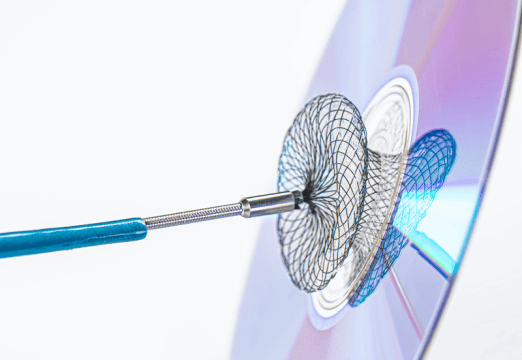Continuous improvement of left atrial appendage occlusion (LAAO) devices has had a positive impact on the safety and efficacy of this technique. However, device related thrombus formation (DRT) is still a major concern because of the associated increased risk of thromboembolic events. Approaching this complication calls for more intense antithrombotic treatments, which in turn involves a higher risk of bleeding.

Multiple clinical, anatomical and procedural factors have been shown to increase the risk of DRT. Among the procedural factors, we find implantation depth. However, data on this aspect are limited to small studies and the differences between devices remains unclear.
The aim of this retrospective and multicenter study was to assess the role of implantation depth in the formation of DRT.
Primary end point was device implantation depth (proximal or distal) impact on DRT incidence. Secondary end point focused on DRT incidence relative to implantation area or angle between pulmonary vein crest and device surface. In addition, clinical outcomes and complications were collected both during hospitalization and follow-up. DRT diagnosis was made by transesophageal echocardiography or CT, and defined as the presence of thrombi adhered to device atrial surface.
Read also: Degenerative Mitral Regurgitation: Impact on Post-Procedural Gradient.
The sample included 1317 patients of mean age 74.9, mostly men. 56% of patients underwent proximal device implantation while the remaining 44% received distal implantation. There were no significant differences in procedural outcomes between the groups.
Proximal implantation patients saw low DRT rate, vs distal implantation patients (2.3% vs 12.2%; P < 0.001), regardless of device type. There were no significant differences in secondary end point. At multivariable analysis, distal implantation and single antiplatelet treatment or its absence (HR: 1.62; CI del 95%: 0.99-2.62) resulted indented factors of DRT.
Conclusion
This study showed that LAAO device implantation depth impacts DRT incidence, and that proximal implantation is the preferred strategy for patients undergoing this procedure.

Dr. Andrés Rodríguez.
Member of the Editorial Board of SOLACI.org.
Original Title: Impact of Device Implant Depth After Left Atrial Appendage Occlusion.
Reference: Pedro Cepas-Guillén, MD, PHD et al J Am Coll Cardiol Intv 2023.
Subscribe to our weekly newsletter
Get the latest scientific articles on interventional cardiology





